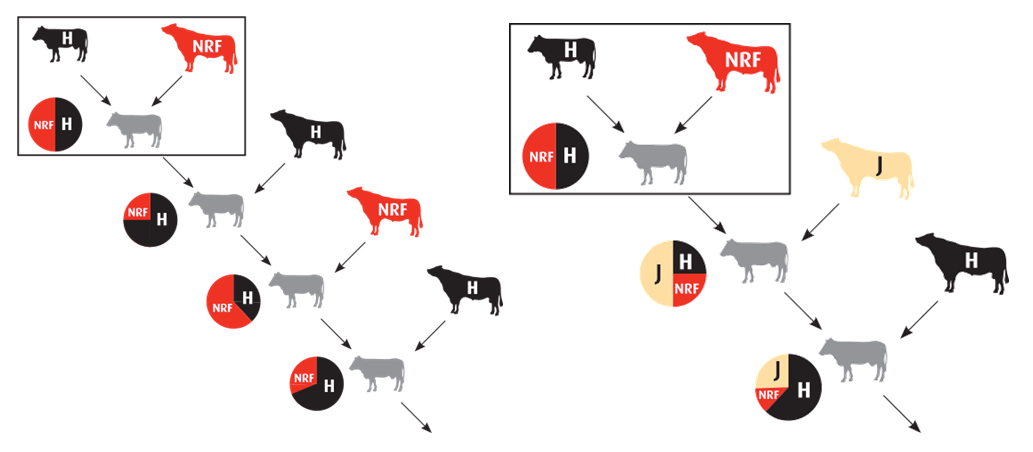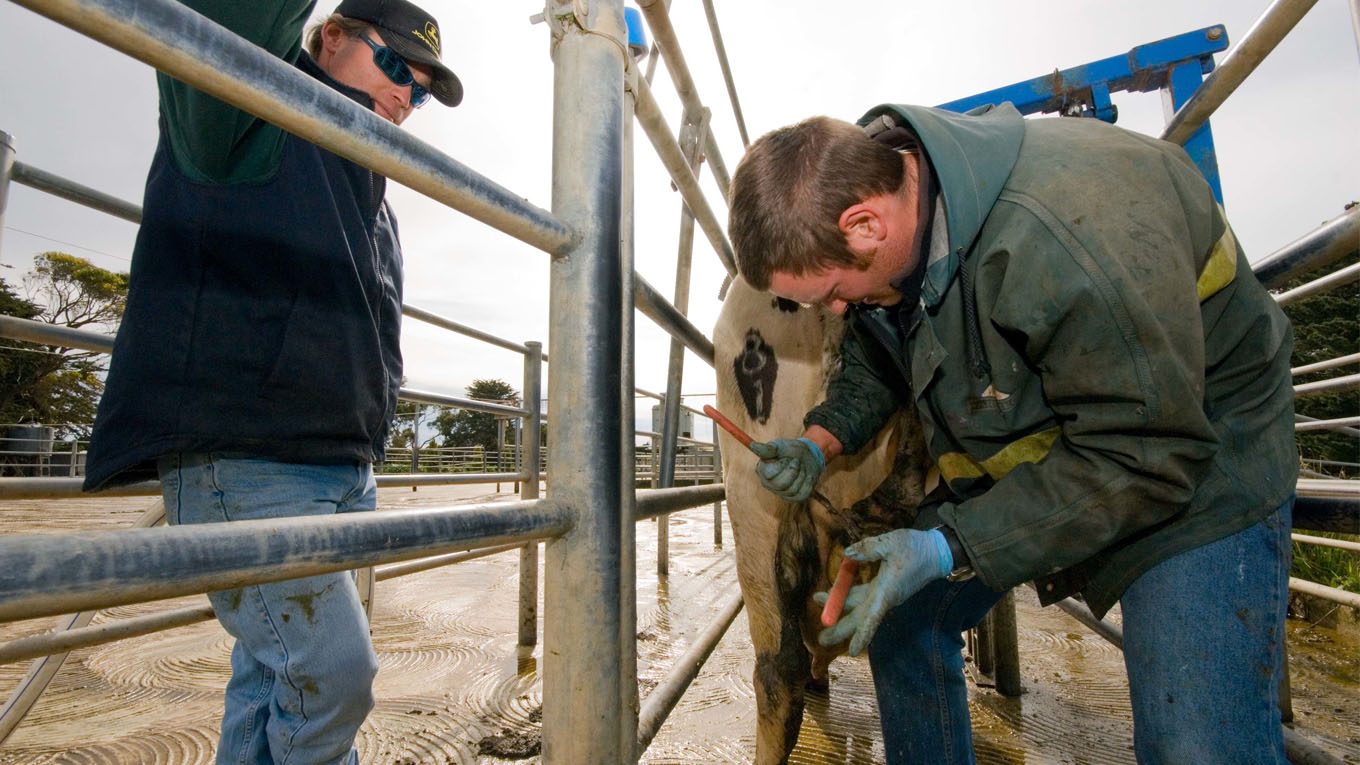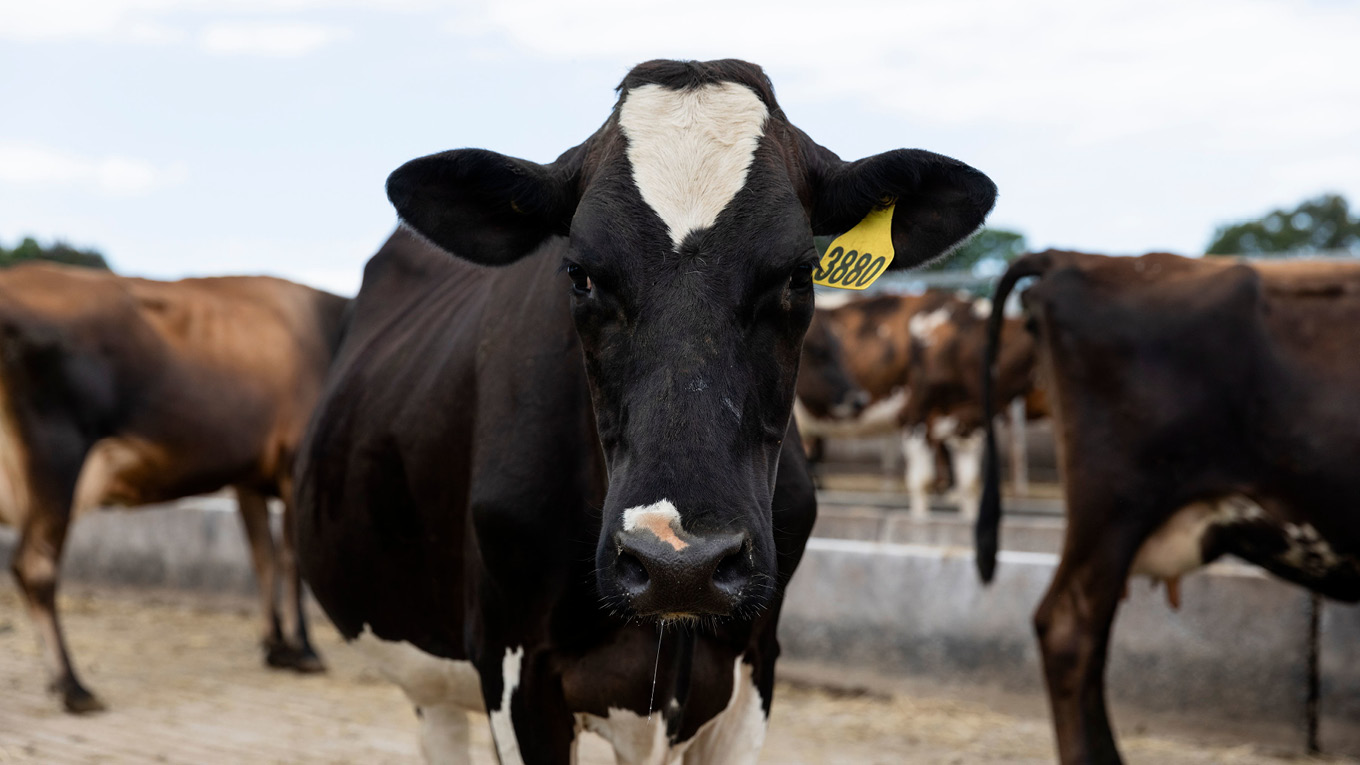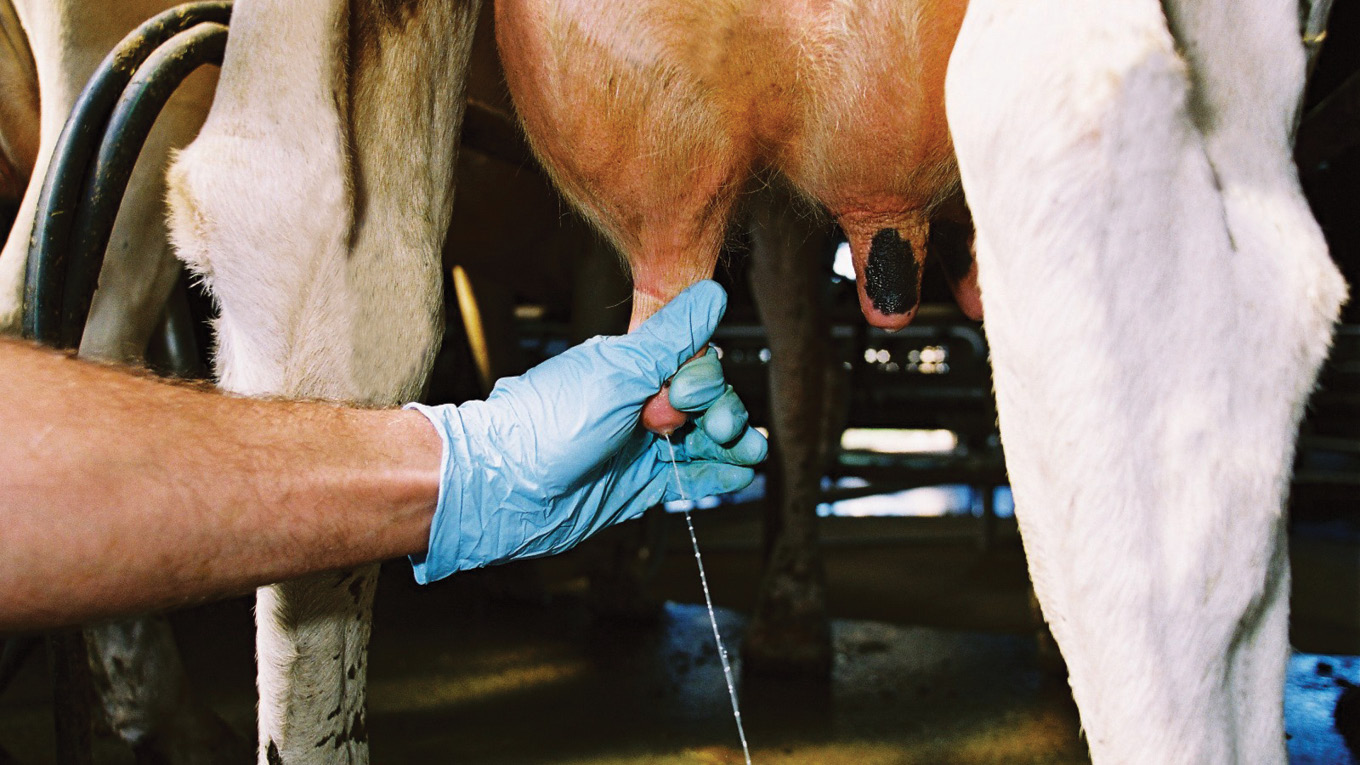Crossbreeding
Crossbreeding is where two or more different breeds or strains of dairy cow are introduced into the breeding mix. The major objective of crossbreeding is to maximise hybrid vigour, which is generally important for traits associated with reproduction, survival and overall fitness. It describes the increased performance of crossbred animals that can be obtained over the average of the parent breeds.
The extent of the hybrid vigour will vary depending on the trait of interest. Hybrid vigour is not transferred to subsequent generations. Any gain in the genetic diversity achieved will be lost from future generations unless an ongoing crossbreeding strategy is applied. When a crossbred animal is mated to one of the original parent breeds, half of the hybrid vigour will be lost in the offspring.
A further benefit of crossbreeding is breed complementarity, which refers to the introduction of desirable genes from a second breed that are absent or of low frequency in the original breed. It is an added genetic effect which is transmitted to future generations and applies to both production and functional traits.
Many farmers have come to recognise crossbreeding as a fast-track solution to improving fertility and longevity in herds. However, establishment of a crossbreeding program is a serious, long-term commitment requiring the selection of specific breeds as well as a type of crossbreeding system to suit the individual.
Due to the vast range of farms, resources, management skills, facilities and commercial goals in the dairy industry, it is important these factors are all carefully considered when developing a long-term breeding strategy.
Importance of sire selection
It is imperative that sires with high genetic merit are used in a crossbreeding strategy, as this will maximise production, reproduction and survival results and hence farm profitability.
Hybrid vigour will improve many characteristics, but not as much as the gain that can be made from implementing a crossbreeding plan that utilises high genetic merit bulls using two or three different breeds in a crossbreeding program.
Fertility of crossbreds
Numerous studies conducted in a diverse range of environments around the world have demonstrated that crossbreeding is an effective way to counteract declining fertility and survival. Only a limited number of studies have been undertaken in Australia on the implications and benefits of crossbreeding under local, pasture-based conditions.
Importantly, the Australian studies have been able to demonstrate that crossbred cows have superior reproductive performance, more compact calving patterns, higher stocking rates and longer survival in the herd, potentially making them more profitable than cows in purebred herds.
Due to the interest from sections of the Australian dairy industry in the how and why of crossbreeding programs in Australian dairy herds, Dairy Australia funded a study in 2015 to look at the status of crossbreeding in Australia. The intention of this study was to establish what breeds were being used, how a breeding plan should work and the benefits that crossbreeding could deliver. The study assessed herd data from 1990 to 2014 from 18,207 farms and analysed the performance of a selected group of established Victorian crossbred herds to determine how breeding plans were managed including comparing “two-way” with “three-way” crosses in those herds.
The retrospective analysis of herd-breed structures found that the proportion of Australian herds with crossbred cows has increased over the time period and more farmers have employed systematic crossbreeding strategies, including utilising three-breed cross systems. The second part of the study showed that the most common F1 (first cross) combination, namely the Jersey-Holstein cross, produced less milk and protein than purebred Holstein cows, but outperformed the Holstein cows for fat, fat percentage, protein percentage, survival and in the reproductive parameters.
The results for the F2 (second cross) comparisons varied, depending on the breeds used in the three-breed cross. For the most common three-breed cross, the Australian Red x Jersey-Holstein, the results were conclusive. For this cross, three-breed cows performed significantly better than both the backcross cows (Holstein x Jersey-Holstein or Jersey x Jersey-Holstein) for most of the parameters examined.
When the order of this three-breed combination was changed, the three-breed cows still performed better than the backcross animals in most cases. This indicates that the order of the cross may not matter, which could assist with simplifying the formulation of breeding plans for farmers. The superiority of the three-breed cross has also been favourably reported in recent published studies conducted at the University of Minnesota, the site of much of America's recent crossbreeding research.
The final part of the study, the economic model, demonstrated that in the long-term, a crossbreeding strategy is likely to be more profitable in a seasonal calving system than pure breeding. However, it may be several years before the benefits are realised and will require the crossbred herd to be managed at a higher stocking rate. Improved herd reproductive performance and cow longevity is a major driver of the improved profitability.
Advantages of crossbreeding
The process of crossbreeding provides an opportunity to make rapid progress in the breeding objective which otherwise would require several generations of selection. It combines the inherited additive characteristics of two breeds by mixing the genes of the two populations in one animal, with gains from the benefits of hybrid vigour or heterosis.
Crossbreeding, by definition, overcomes inbreeding and therefore has particular relevance in the Holstein and Jersey breeds where it can be used to overcome the mounting concerns of inbreeding.
Positive outcomes associated with crossbreeding include:
- Heterosis or hybrid vigour – when the first cross animals can perform better than the average of their parent breeds
- Complementation of sire and dam effects which are additive
- Crossbreeding provides the opportunity of making full use of a wider range of genetic material when more than one breed is involved
- It is the reverse of inbreeding
- Robustness of crossbred animals
- Can improve herd age structure and dynamics
- Longevity
- Smaller size and therefore increased stocking rate
Disadvantages of crossbreeding
A lack of understanding of how to manage the crossbred herd may currently be one of the key constraints in the adoption of a crossbreeding program. Other concerns are:
- Hybrid vigour in the initial cross declines with any backcrossing to parental breeds
- Maintaining a rotational crossbreeding program, particularly if using three or more breeds, can be complicated, requiring careful record keeping and planning
- Reduced value of a crossbred animal or herd compared to purebred animals
- Limitations in selling crossbred heifers into the export market
- Variation in size and appearance, particularly with early generations of crosses
- Demeanour
- Milk yield compared to a Holstein-Friesian
Rotational crossbreeding
A rotational crossbreeding system is where sires of a recognised breed are mated on a rotational basis to crossbred females derived from earlier matings within the crossbreeding system. It is referred to as “criss-crossing” when two breeds are involved with the backcross derived from consecutive matings of sires from the same breed.
If alternate use of straight-bred sires continues, breed composition stabilises at two thirds of the sire breed and one third of the maternal grandsire breed. Such a systematic crossbreeding system exploits 67% of the heterosis expressed in the first cross. The three-breed rotational crossbreeding system uses three straight-bred sires to exploit 86% of the heterosis.



